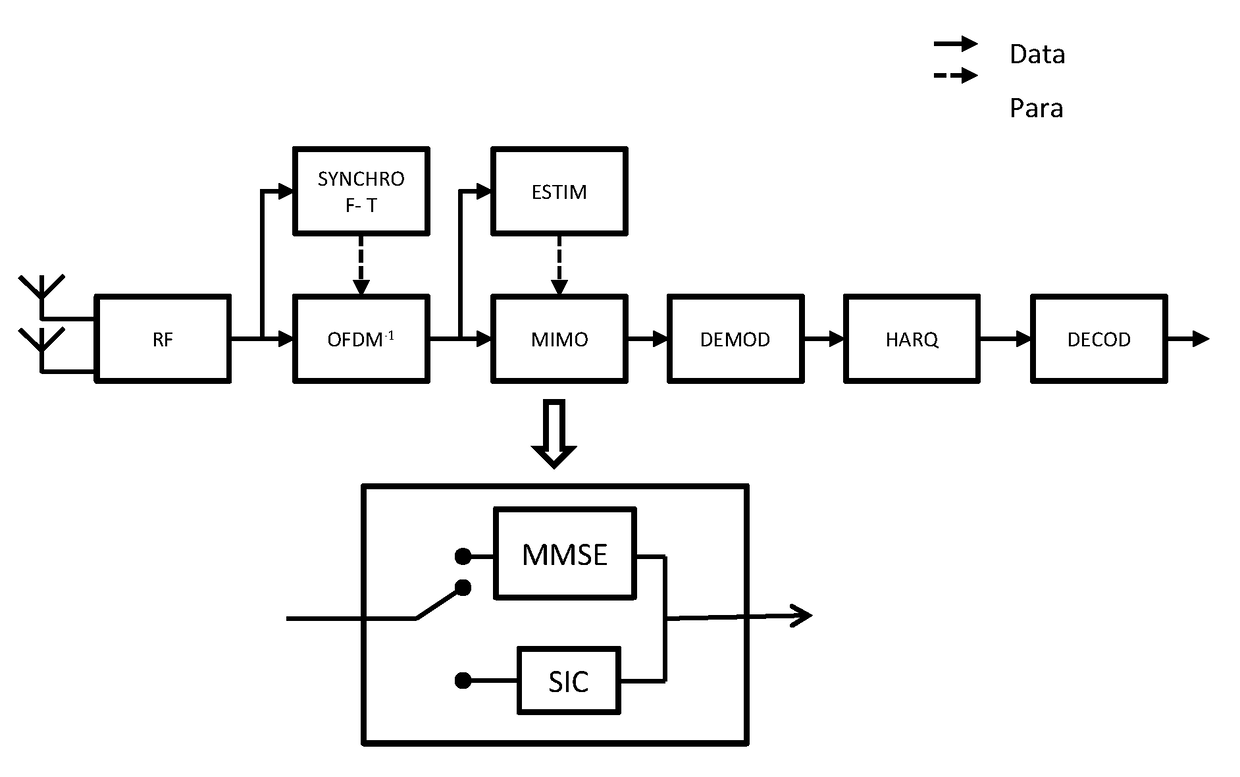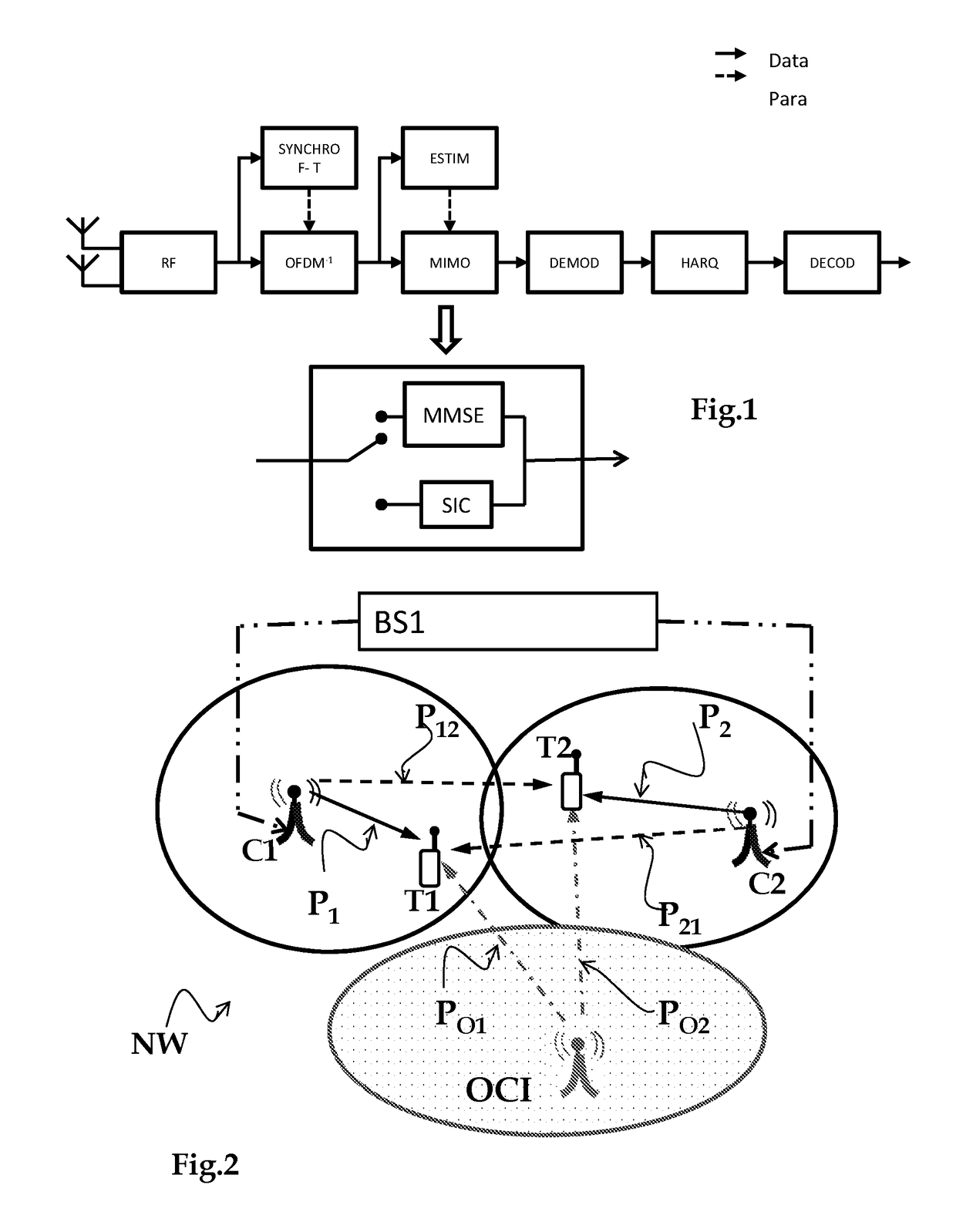Method of signalling intended to be implemented by a cellular telecommunication network, base station and terminal corresponding thereto
a cellular telecommunication network and signalling technology, applied in the field of telecommunications, can solve the problems of large loss in the sum-rate (total rate) of the network, interference in the capacity of the mobile telecommunication network, and in particular of the lte network, and achieve the effect of improving the sum-rate of the network and improving the performan
- Summary
- Abstract
- Description
- Claims
- Application Information
AI Technical Summary
Benefits of technology
Problems solved by technology
Method used
Image
Examples
Embodiment Construction
[0090]The invention lies in the context of a network having at least one base station, a terminal, and a transmission point that serves the terminal, which terminal might suffer interference from a signal for a second terminal. The second terminal is served by a second access point generating the interfering signal. The second access point is referred to as the “interferer”.
[0091]The following description refers to FIG. 2, which for reasons of clarity in the drawing, shows two distinct transmission points C1, C2 respectively serving two terminals T1, T2. This figure is not limiting and serves solely for the purposes of illustration.
[0092]A transmission point designates the entity serving a terminal, where the terms “transmission point” and “transmitter” are equivalent. A transmission point corresponds to a cell. In a network complying with the specifications of 3GPP LTE Release 11, a cell may correspond to a plurality of transmission points.
[0093]A terminal is served by its server t...
PUM
 Login to View More
Login to View More Abstract
Description
Claims
Application Information
 Login to View More
Login to View More - R&D
- Intellectual Property
- Life Sciences
- Materials
- Tech Scout
- Unparalleled Data Quality
- Higher Quality Content
- 60% Fewer Hallucinations
Browse by: Latest US Patents, China's latest patents, Technical Efficacy Thesaurus, Application Domain, Technology Topic, Popular Technical Reports.
© 2025 PatSnap. All rights reserved.Legal|Privacy policy|Modern Slavery Act Transparency Statement|Sitemap|About US| Contact US: help@patsnap.com



